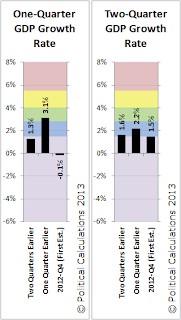During the live session, I talked about a common technique I use when the needs of the learner aren't necessarily aligned with what the organization would like to see in the training. To facilitate both I simply change the context of the task, but not the task itself. This is nothing new; course books do it all the time. For example, instead of making arrangements for a business meeting... we make arrangements for a barbeque. The learners get the 'break from work' so many are looking for, and they are still learning the language and skills needed in their jobs.
However, because I almost never use course books, I instead look for simple things in the learners' lives to exploit for skills practice in the classroom. During the live session I gave the example of the May Tree, a tradition here in Bavaria. You can find the live session recording here.
To follow up, I'd like to give an example of how this is scalable to various classes. In this example, I have taken a different point of view on task based learning. Instead of one class completing the task over several lessons, various classes work on the task in sequence to complete the overall project.
Lesson Plan: The Glühwein Stand (Mulled Wine Stand)
Class 1 - Intermediate, 6 Students, 60 min
Objective - Proposing ideas, giving justification, describing purpose, agree / disagree
I explained the task that today we would plan a glühwein stand for the city christmas market (this class was in early December). The profits would go to charity. Each class throughout the day would use the work from the class before to take the next step. For this group, the task was to identify all of the resources needed to start the stand.
 |
| Source: eltpics, @jeeves_ http://www.flickr.com/photos/eltpics/8197827162 |
The learners were all given stacks of note cards and told to brainstorm all the things they need. Write each resource on a different card. Then they created an affinity diagram in the middle of the table and assigned the resources a catergory name like "Equipment", "Staff", "Materials", "Documentation", etc.
Throughout the lesson, I offered feedback, injected useful phrases, highlighted vocabulary, etc.
Class 2 - Upper Intermediate, 3 Students, 60 min
Objectives - Clarifying, vocabulary for regulations, collocations, syntax, and brevity
At the start of the lesson I gave the group the stack of note cards from the previous group and asked them to 'recreate' the affinity diagram. The group asked me questions to clarify what the cards meant and the categories. I recorded and added clarifying phrases on the board.
I then told them to focus on the legal aspects of the stand. What authorizations would be need? They researched the information (in German) on the web and had to explain it in English (a common task in their work). On two websites, I asked them to translate particularly complex sentences, identify collocations, and condense sentences.
Their final task was to create a list of steps to be completed in order to get city approval for the stand.
Class 3 - Pre-Intermediate, 6 Students, 60 min
Objectives - Asking for opinions, stating opinions, saying numbers, talking about budgets
The lesson fit perfectly with the previous lessons in that we has just practiced numbers and talking about costs. This group was given the note cards from Class 1 and given the task to create a budget for all the resources. How much do the cups cost? How much does it cost to rent / buy a stand? Etc. Feedback... naturally.
By the end of the lesson they had a catergorized budget on A4 paper. I ran to the copy machine for the next lesson.
Class 4 - Intermediate, 7 Students, 60 min
Objectives - reach an agreement, discussion options, formal emails for assistance
Finally, each student in the last class was given a copy of the proposed budget from the lesson before. Their job was to create a profit projection and determine how they could make the most money. The charity wanted to know how much in donations they should expect before approving the project. I turned over the white board to one of the learners and got out of the way. During the discussion they decided that the best way to save money was to ask for volunteers and donations of equipment. They made a profit calculation and make a list of people / organizations to contact for support.
A natural follow up task was for them to actually write the emails for support. Each student was given a different contact person and they had to request a donation for the stand (equipment, volunteer support, etc.) or authorization from the charity and government (from Class 2).
By the end of the day I was able to write an email to all of the students and tell them how much money we would donate as a result of their work. The feedback was great and several suggested that we acutally make it a reality. I guess that would have to be another lesson.
They used the functional language needed in their work, but the context was something taken from their personal lives. Combined with doses of feedback... the lessons were very student led and had minimal teacher talking time.









.jpg)








